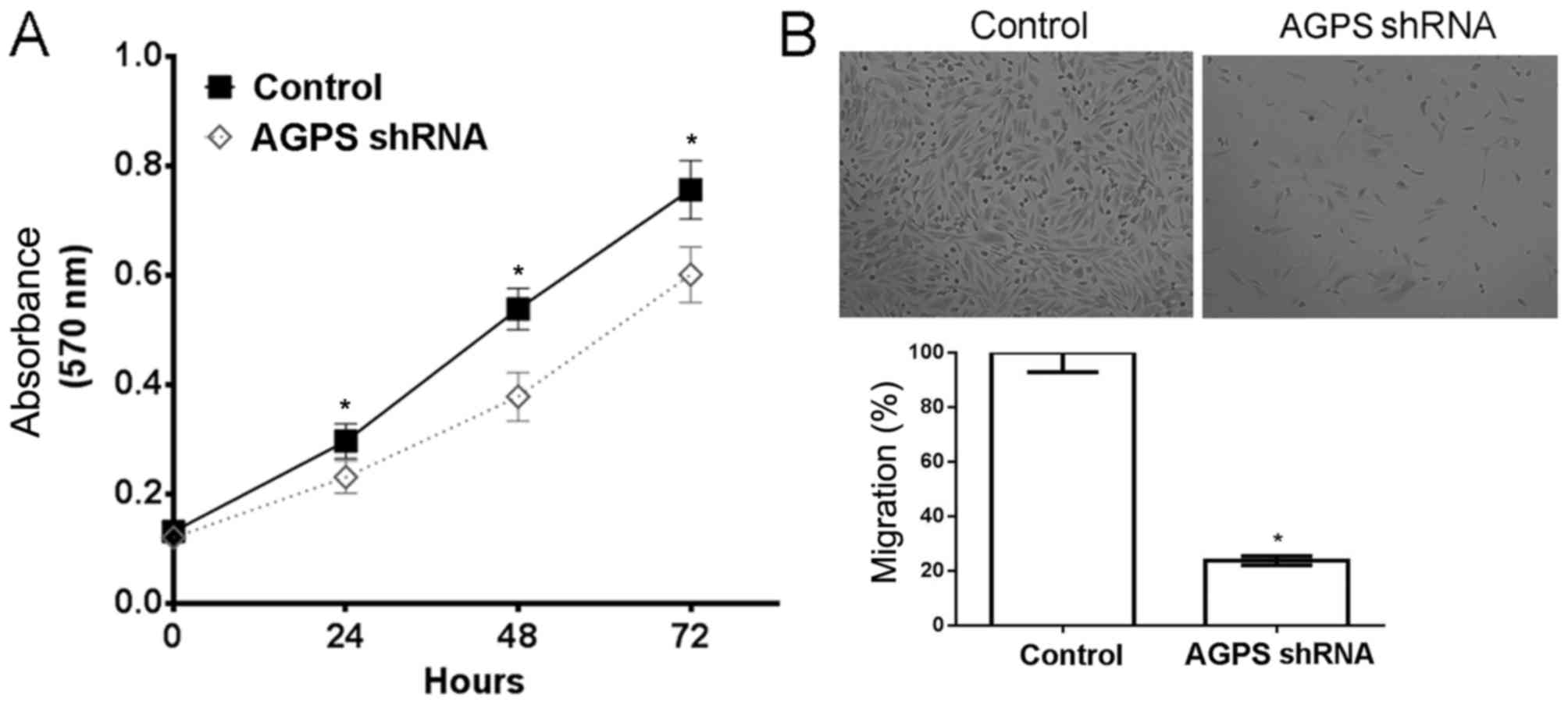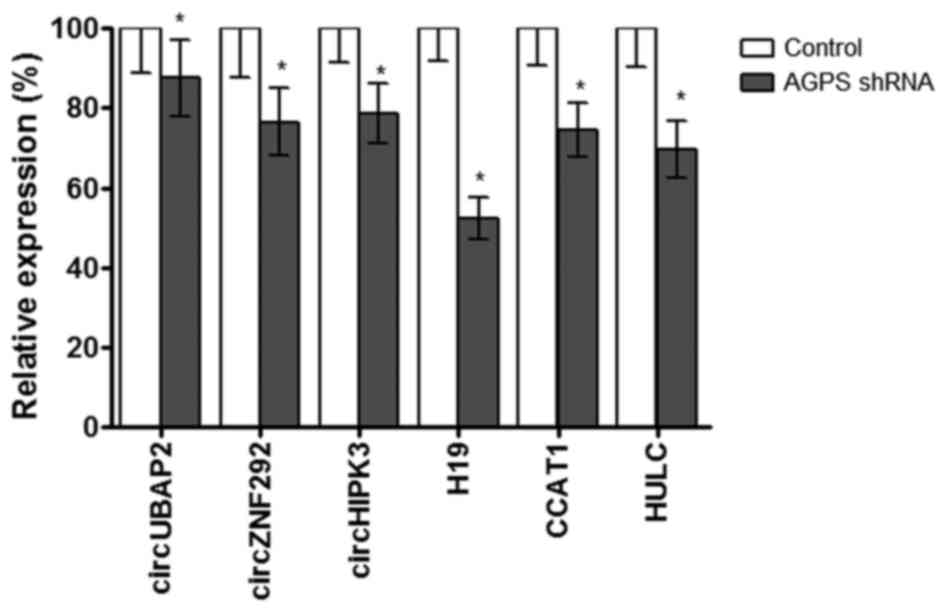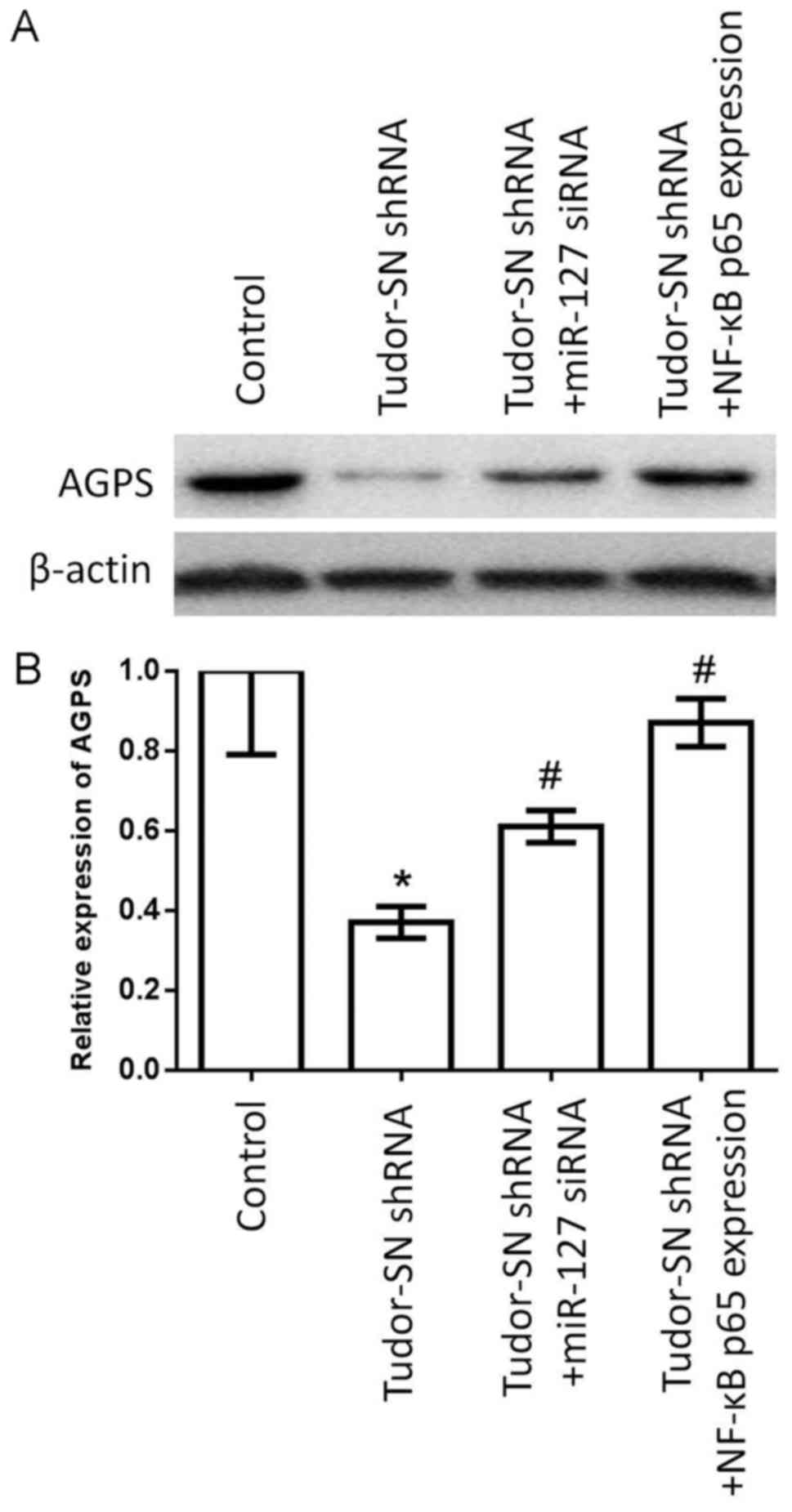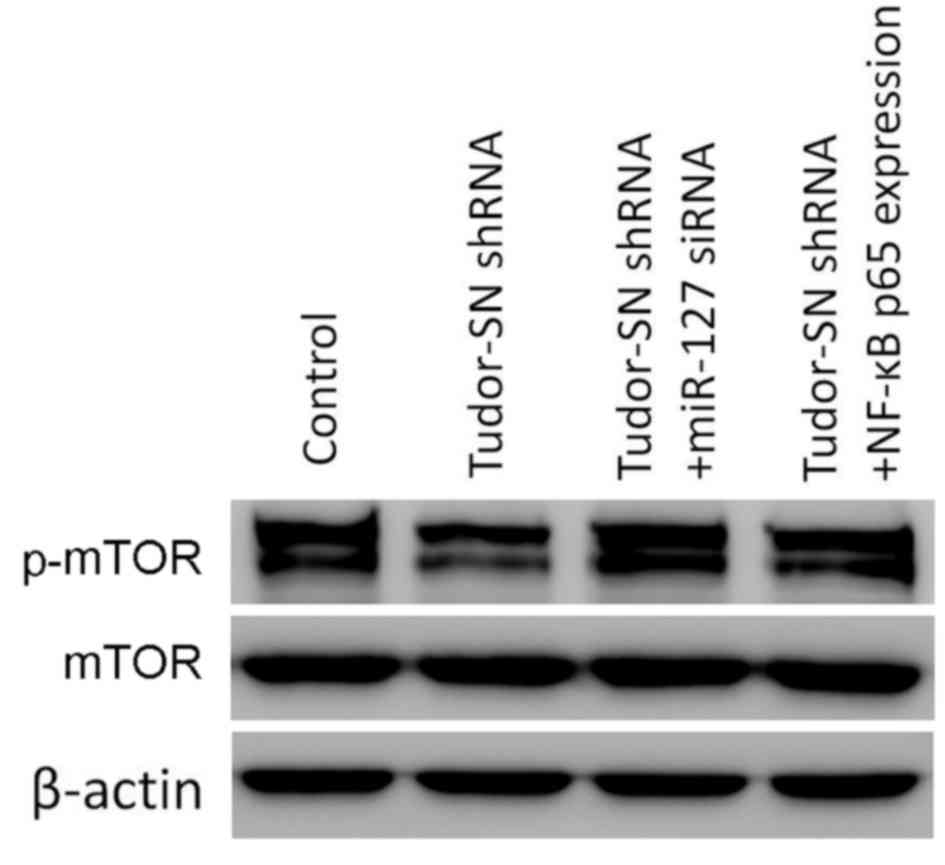|
1
|
Zhang S, Xie R, Zhao T, Yang X, Han L, Ye
F, Lei T and Wan F: Neural stem cells preferentially migrate to
glioma stem cells and reduce their stemness phenotypes. Int J
Oncol. 45:1989–1996. 2014. View Article : Google Scholar : PubMed/NCBI
|
|
2
|
Ellison D, Love S, Chimelli L, Harding BN,
Lowe JS, Vinter HV, Brandner S and Yong WH: NeuropathologyA
reference text of CNS pathology. 3rd ed. Edinburgh: Elsevier/Mosby;
2013
|
|
3
|
Zhang Z, Li C, Tan Q, Xie C, Yang Y, Zhan
W, Han F, Sharma HS and Sharma A: Curcumin suppresses tumor growth
and angiogenesis in human glioma cells through modulation of
vascular endothelial growth factor/angiopoietin-2/thrombospondin-1
signaling. CNS Neurol Disord Drug Targets. 16:346–350. 2017.
View Article : Google Scholar : PubMed/NCBI
|
|
4
|
Birk HS, Han SJ and Butowski NA: Treatment
options for recurrent high-grade gliomas. CNS Oncol. 6:61–70. 2017.
View Article : Google Scholar : PubMed/NCBI
|
|
5
|
Li Y, Xu J, Chen H, Bai J, Li S, Zhao Z,
Shao T, Jiang T, Ren H, Kang C and Li X: Comprehensive analysis of
the functional microRNA-mRNA regulatory network identifies miRNA
signatures associated with glioma malignant progression. Nucleic
Acids Res. 41:e2032013. View Article : Google Scholar : PubMed/NCBI
|
|
6
|
Dewert N, Amschler K, Lorenz V and Schön
MP: The IKKα-dependent non-canonical pathway of NF-κB activation is
constitutively active and modulates progression-related functions
in a subset of human melanomas. Arch Dermatol Res. 308:733–742.
2016. View Article : Google Scholar : PubMed/NCBI
|
|
7
|
Fashe T, Saarikettu J, Isomäki P, Yang J
and Silvennoinen O: Expression analysis of Tudor-SN protein in
mouse tissues. Tissue Cell. 45:21–31. 2013. View Article : Google Scholar : PubMed/NCBI
|
|
8
|
Kochan DZ, Ilnytskyy Y, Golubov A, Deibel
SH, McDonald RJ and Kovalchuk O: Circadian disruption-induced
microRNAome deregulation in rat mammary gland tissues. Oncoscience.
2:428–442. 2015. View Article : Google Scholar : PubMed/NCBI
|
|
9
|
Tsuchiya N, Ochiai M, Nakashima K, Ubagai
T, Sugimura T and Nakagama H: SND1, a component of RNA-induced
silencing complex, is up-regulated in human colon cancers and
implicated in early stage colon carcinogenesis. Cancer Res.
67:9568–9576. 2007. View Article : Google Scholar : PubMed/NCBI
|
|
10
|
Yeo SK, French R, Spada F and Clarkson R:
Opposing roles of Nfkb2 gene products p100 and p52 in the
regulation of breast cancer stem cells. Breast Cancer Res Treat.
162:465–477. 2017. View Article : Google Scholar : PubMed/NCBI
|
|
11
|
Zhao X, Duan Z, Liu X, Wang B, Wang X, He
J, Yao Z and Yang J: MicroRNA-127 is downregulated by Tudor-SN
protein and contributes to metastasis and proliferation in breast
cancer cell line MDA-MB-231. Anat Rec (Hoboken). 296:1842–1849.
2013. View
Article : Google Scholar : PubMed/NCBI
|
|
12
|
Armengol S, Arretxe E, Enzunza L, Llorente
I, Mendibil U, Navarro-Imaz H, Ochoa B, Chico Y and Martínez MJ:
SREBP-2-driven transcriptional activation of human SND1 oncogene.
Oncotarget. 8:108181–108194. 2017. View Article : Google Scholar : PubMed/NCBI
|
|
13
|
Fung S, Xu C, Hamel E, Wager-Miller JB,
Woodruff G, Miller A, Sanford C, Mackie K and Stella N: Novel
indole-based compounds that differentiate alkylindole-sensitive
receptors from cannabinoid receptors and microtubules:
Characterization of their activity on glioma cell migration.
Pharmacol Res. 115:233–241. 2017. View Article : Google Scholar : PubMed/NCBI
|
|
14
|
Zhu Y, Liu XJ, Yang P, Zhao M, Lv LX,
Zhang GD, Wang Q and Zhang L: Alkylglyceronephosphate synthase
(AGPS) alters lipid signaling pathways and supports chemotherapy
resistance of glioma and hepatic carcinoma cell lines. Asian Pac J
Cancer Prev. 15:3219–3226. 2014. View Article : Google Scholar : PubMed/NCBI
|
|
15
|
Livak KJ and Schmittgen TD: Analysis of
relative gene expression data using real-time quantitative PCR and
the 2(-Delta Delta C(T)) method. Methods. 25:402–408. 2001.
View Article : Google Scholar : PubMed/NCBI
|
|
16
|
Jin Y, Wu W, Zhang W, Zhao Y, Wu Y, Ge G,
Ba Y, Guo Q, Gao T, Chi X, et al: Involvement of EGF receptor
signaling and NLRP12 inflammasome in fine particulate
matter-induced lung inflammation in mice. Environ Toxicol.
32:1121–1134. 2017. View Article : Google Scholar : PubMed/NCBI
|
|
17
|
Zhu Y, Liu A, Zhang X, Qi L, Zhang L, Xue
J, Liu Y and Yang P: The effect of benzyl isothiocyanate and its
computer-aided design derivants targeting alkylglycerone phosphate
synthase on the inhibition of human glioma U87MG cell line. Tumor
Biol. 36:3499–3509. 2015. View Article : Google Scholar
|
|
18
|
Bian EB, Li J, Xie YS, Zong G, Li J and
Zhao B: LncRNAs: New players in gliomas, with special emphasis on
the interaction of lncRNAs with EZH2. J Cell Physiol. 230:496–503.
2015. View Article : Google Scholar : PubMed/NCBI
|
|
19
|
Yang P, Qiu Z, Jiang Y, Dong L, Yang W, Gu
C, Li G and Zhu Y: Silencing of cZNF292 circular RNA suppresses
human glioma tube formation via the Wnt/β-catenin signaling
pathway. Oncotarget. 7:63449–63455. 2016.PubMed/NCBI
|
|
20
|
Zhang H, Wang G, Ding C, Liu P, Wang R,
Ding W, Tong D, Wu D, Li C, Wei Q, et al: Increased circular RNA
UBAP2 acts as a sponge of miR-143 to promote osteosarcoma
progression. Oncotarget. 8:61687–61697. 2017.PubMed/NCBI
|
|
21
|
Li Y, Zheng F, Xiao X, Xie F, Tao D, Huang
C, Liu D, Wang M, Wang L, Zeng F and Jiang G: CircHIPK3 sponges
miR-558 to suppress heparanase expression in bladder cancer cells.
EMBO Rep. 18:1646–1659. 2017. View Article : Google Scholar : PubMed/NCBI
|
|
22
|
He TD, Xu D, Sui T, Zhu JK, Wei ZX and
Wang YM: Association between H19 polymorphisms and osteosarcoma
risk. Eur Rev Med Pharmacol Sci. 21:3775–3780. 2017.PubMed/NCBI
|
|
23
|
Zhu H, Zhao H, Zhang L, Xu J, Zhu C, Zhao
H and Lv G: Dandelion root extract suppressed gastric cancer cells
proliferation and migration through targeting lncRNA-CCAT1. Biomed
Pharmacother. 93:1010–1017. 2017. View Article : Google Scholar : PubMed/NCBI
|
|
24
|
Fan YH, Wu MJ, Jiang Y, Ye M, Lu SG, Wu L
and Zhu XG: Long non-coding RNA HULC as a potential prognostic
biomarker in human cancers: A meta-analysis. Oncotarget.
8:21410–21417. 2017.PubMed/NCBI
|
|
25
|
Jiang H, Jin C, Liu J, Hua D, Zhou F, Lou
X, Zhao N, Lan Q, Huang Q, Yoon JG, et al: Next generation
sequencing analysis of miRNAs: MiR-127-3p inhibits glioblastoma
proliferation and activates TGF-β signaling by targeting SKI.
OMICS. 18:196–206. 2014. View Article : Google Scholar : PubMed/NCBI
|
|
26
|
Gutierrez-Beltran E, Denisenko TV,
Zhivotovsky B and Bozhkov PV: Tudor staphylococcal nuclease:
Biochemistry and functions. Cell Death Differ. 23:1739–1748. 2016.
View Article : Google Scholar : PubMed/NCBI
|













